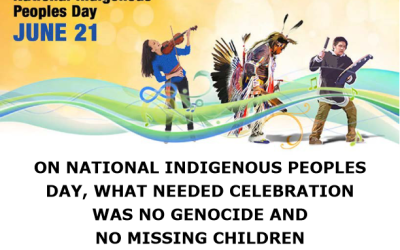Early last week was the deadline for First Nations to comply with the divisive First Nations Financial Transparency Act (FNFTA). The FNFTA requires First Nations all over Canada to post their audited financial statements and the salaries and benefits of elected officials on both a publically-available website and the Aboriginal Affairs and Northern Development Canada website.
Despite the pushback from First Nations leaders, transparency and accountability are key components of good governance. International standards have established that transparency is a universal norm that all governments should strive towards.
The United Nations Development Program considers transparency and accountability to be one of its nine principles of good governance and stresses that through transparency, “Processes, institutions and information are directly accessible to those concerned with them, and enough information is provided to understand and monitor them.”
In 2009, the Centre for First Nations Governance—a non-profit that supports the self-governance of First Nations—released a Governance Best Practices Report in which they laid out several principles that contribute to good governance. Transparency and fairness is one of the seventeen governance principles they promote and present Westbank First Nation in British Columbia as a case in point.
The report found that increased transparency and accountability in Westbank First Nation stabilized governance, increased economic growth on the reserve, and resulted in a “growing respect for the government from citizens and from external businesses and governments.”
Clearly transparency can benefit First Nations communities, so why are some chiefs and First Nations leaders complaining about a law providing basic transparency to the public?
Up to now, bands were required to provide this sort of information to Aboriginal Affairs and Northern Development Canada. Band members, however, often found they could not access this information for their own viewing and frequently went to the media or the Canadian Taxpayers Federation with their complaints about a lack of transparency within their First Nation.
A preliminary look into how many bands across Canada actually post this information already on websites demonstrates that just over 10 per cent of bands in Ontario and 7 per cent of the bands in the three Prairie provinces post their financial information. This qualifies as a very small minority of bands who actually post this information already in just these two regions.
So, how do we know that First Nations members desire transparency? Well, the Frontier Centre for Public Policy, in its latest annual Aboriginal Governance Index (AGI), asked members about their expectations of governance. In our fifth AGI we asked about disclosure of chief and councilor salaries. In total, we received responses from over 3,000 ordinary band members from across the Prairie Provinces.
What we found was that nearly 80 per cent of respondents told us that they think residents should “definitely” be able to learn how much money band leaders make. Unfortunately, a much smaller number of our respondents confidently stated that they think residents are actually able to access this information. Just over 35 per cent of respondents told us that information about chief and council salaries is “definitely” available to everyone. A slightly smaller number, approximately 25 per cent, gave the opposite answer, saying that the information is “definitely not” freely available.
Transparency over salaries was not the only dimension of transparency that we studied. We also asked about transparency over band council decisions. For example, when we asked whether everyone who lives on the reserve is allowed to find out what decisions have been recently made by council, slightly fewer than one-third of respondents said
“definitely, yes.” Just under 20 per cent provided an answer at the opposite end of the spectrum, saying individuals are “definitely not” able to gain access to information about recent council decisions.
Clearly, a troubling minority of band residents feel there is a lack of transparency on their First Nation. Having something like the First Nations Financial Transparency Act in place will go a long way towards encouraging good governance among First Nations communities. We already know that a majority of band members on the Prairies at least feel that band leadership should be accountable to the public when it comes to salaries.
It’s time we recognized that transparency is a universal norm and expand it to include First Nations communities here in Canada.


